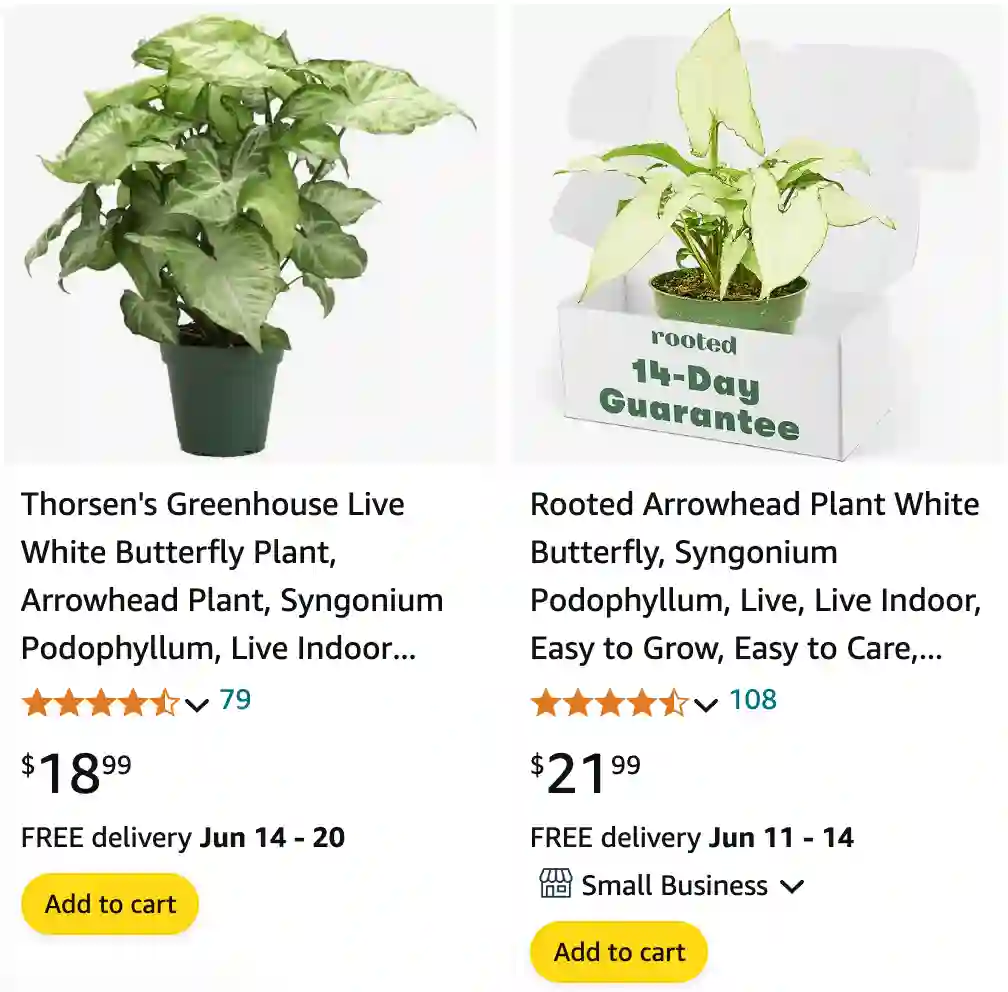
Syngonium White Butterfly: Your Guide to This Stunning Foliage Friend
Hey there, plant enthusiasts! Ferb Vu here, and today we’re diving into the world of the captivating Syngonium White Butterfly. This beauty isn’t just another houseplant; it’s a conversation starter with its mesmerizing white and green foliage.
If you’re considering welcoming a White Butterfly into your home or simply curious about this unique plant, this guide is for you. We’ll answer all your burning questions, from care tips to its captivating features.
What is a Syngonium White Butterfly?
The White Butterfly, a cultivar of Syngonium podophyllum, hails from the Araceae family, sharing kinship with philodendrons. This tropical climber boasts stunning arrowhead-shaped leaves. But what truly sets it apart is the mesmerizing interplay of colors. New growth emerges with a predominantly white heart, gradually transitioning to a blend of creamy white and vibrant green as the leaves mature. The intricate white veination adds another layer of visual interest, making it appear like delicate butterfly wings – hence the apt name.
Syngonium White Butterfly vs Batik
Syngonium Batik, on the other hand, is a party in a pot! The variegation is a beautiful mix of white, cream, and green, with splotches and speckles that remind me of a batik dye job (hence the name, I guess). It grows much faster than my White Butterfly, putting out new, vibrant leaves all the time. While it doesn’t have the same ethereal look, the Batik’s energetic growth and playful patterns make it a joy to watch unfurl.
Syngonium White Butterfly vs Holly
My White Butterfly, as I mentioned, is a bit of a diva. Those gorgeous white leaves seem to be a bit more sensitive to light and watering than my Holly. If I don’t get it just right, the edges can crisp up. But when it’s happy, oh boy, is it happy! The contrast between the white and the green is just captivating.
Syngonium Holly is a trooper. It takes whatever light and watering I throw at it (within reason, of course) and just keeps on trucking. The variegation is more balanced, with a good amount of green alongside the creamy white. It doesn’t have the same dramatic contrast as the White Butterfly, but it makes up for it in its easy-going nature and resilience.
Where Does the Syngonium White Butterfly Come From?
Imagine lush rainforests teeming with life. That’s the natural habitat of the White Butterfly. It thrives in the semi-tropical regions of South and Central America, particularly in countries like Mexico and Brazil. Here, it climbs amongst other plants, seeking dappled sunlight and clinging to sturdy structures.
Is the Syngonium White Butterfly Easy to Care For?
Absolutely! The White Butterfly is a dream come true for beginner plant parents. It’s known for its low-maintenance nature. Here are some key things to keep in mind:
- Light: This plant prefers bright, indirect light. Avoid harsh midday sun, as it can scorch the leaves.
- Water: Water your White Butterfly when the top inch of soil feels dry. Overwatering is a big no-no, so err on the side of underwatering.
- Soil: A well-draining potting mix is crucial. Opt for a blend that includes perlite or orchid bark for optimal drainage.
- Humidity: While the White Butterfly tolerates average household humidity, it thrives in a more humid environment. Grouping plants together or using a humidifier can help.
- Fertilizer: During the growing season (spring and summer), a balanced fertilizer diluted to half strength once a month is sufficient.
How Big Does the Syngonium White Butterfly Get?
In its natural habitat, the White Butterfly can climb quite high. As a houseplant, its growth depends on the pot size and your training methods. In a pot, it can reach a height of 3-6 feet with proper care.
Can I Prune My Syngonium White Butterfly?
Absolutely! Pruning encourages bushier growth and helps maintain a desired size. Simply snip off leggy stems just above a node (the bump where a new leaf will emerge). You can even propagate the cuttings to create new plants!
What are Some Common Problems with the Syngonium White Butterfly?
While generally a resilient plant, the White Butterfly can face a few challenges:
- Brown leaves: This can be caused by underwatering, overwatering, or low humidity.
- Yellow leaves: This might indicate excessive light or nutrient deficiency.
- Pests: Keep an eye out for spider mites and mealybugs. Neem oil or insecticidal soap can help manage them.
Is the Syngonium White Butterfly Toxic?
Unfortunately, yes. Like many Araceae plants, the White Butterfly contains calcium oxalate crystals, which can be irritating if ingested. Keep it out of reach of pets and children.
Where Can I Buy a Syngonium White Butterfly?
These beauties are becoming increasingly popular. You can find them at local plant nurseries, online retailers specializing in houseplants, or even garden centers.
Final Thoughts on the Syngonium White Butterfly
The Syngonium White Butterfly is more than just a houseplant; it’s a captivating piece of living art. With its easy-going nature and stunning foliage, it’s a perfect addition to your indoor jungle. So, bring a touch of the tropics home and watch your White Butterfly flourish!




